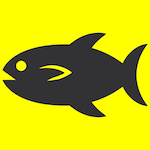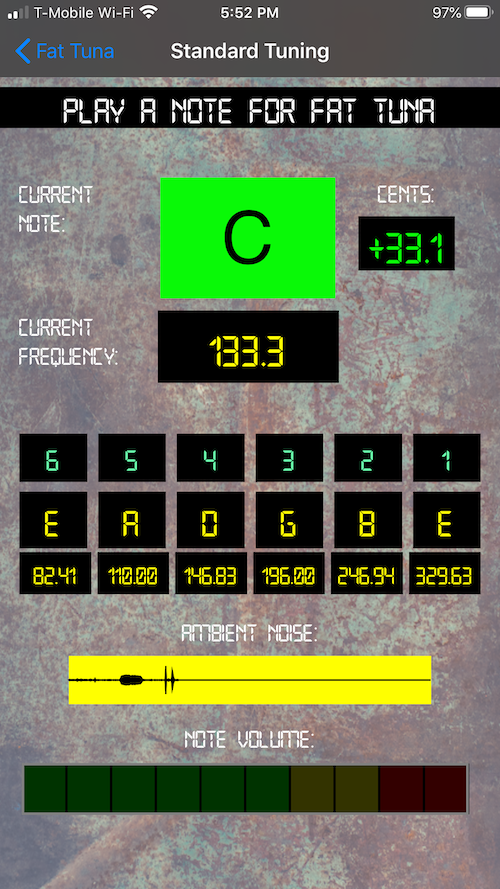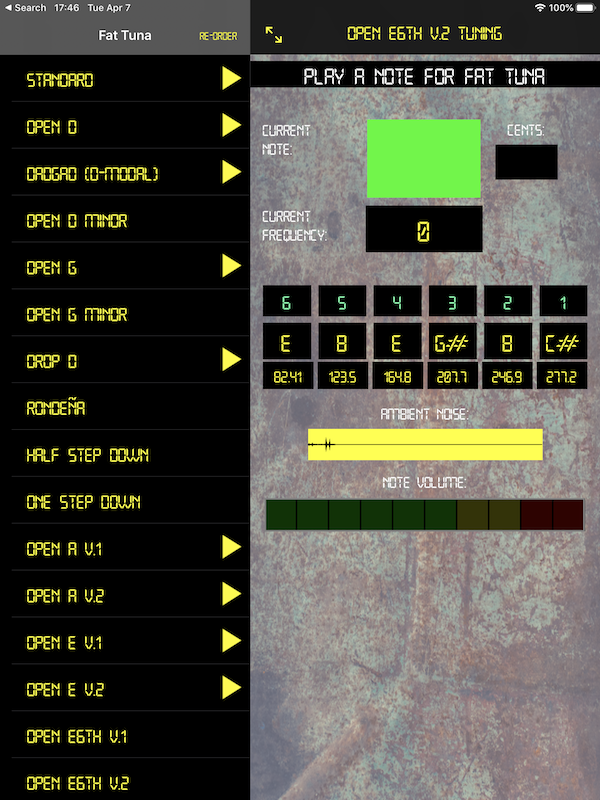
Fat Tuna is an iPhone app that helps me tune my guitars.

The image on the left is the main screen for Fat Tuna. While holding the guitar flat, I put my iPhone on the surface. Pluck a string, and the note appears in the top green box. Adjust the tuning until the frequency is close to the required frequency that appears below the string name. The "cents" number shows whether you tuning is too high or too low. For myself, if I get the tuning within 10 cents, the note sounds close enough. The string labels (in this case, E A D G B E) indicate the notes that are required for the current tuning (in this case, "standard tuning"). And touch any note to hear the sound that should correspond to your guitar string.

FatTuna has several modes, so you can experiment with open tunings. Many older time blues players (including myself), used some of these tunings extensively.FatTuna has several modes, so you can experiment with open tunings. Many older time blues players (including myself), used some of these tunings extensively.

While holding the guitar flat, I put my iPhone on the surface. Pluck a string, and the note appears in the top green box.
Adjust the tuning until the frequency is close to the required frequency that appears below the string name.
The "cents" number shows whether you tuning is too high or too low.
For myself, if I get the tuning within 10 cents, the note sounds close enough. The string labels (in this case, E A D G B E) indicate the notes that are required for the current tuning (in this case, "standard tuning").
